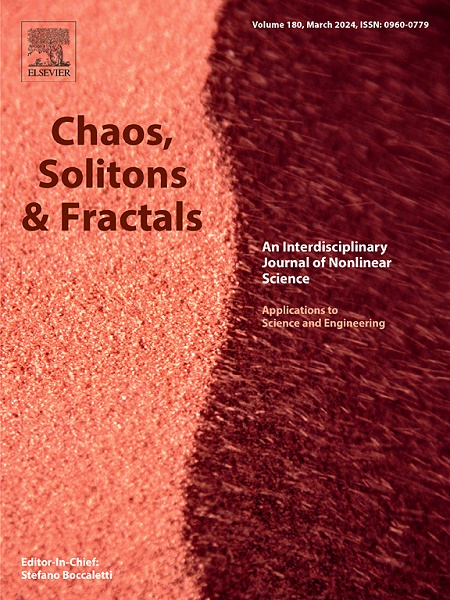基于混合计算和人工神经网络的萨特比纳米流体在拉伸表面的传热和生物对流分析
IF 5.6
1区 数学
Q1 MATHEMATICS, INTERDISCIPLINARY APPLICATIONS
引用次数: 0
摘要
本研究将计算流体力学与人工神经网络相结合,分析了生物对流萨特比纳米流体在二维拉伸片上的传热传质特性。Darcy-Forchheimer模型评估了存在化学反应时多孔介质的阻力。通过适当的相似变换,将控制方程转化为无量纲形式,并采用bvp4c方法进行数值求解。此外,利用Levenberg-Marquardt反向传播算法(LMBP)建立并训练了一个人工神经网络模型,以准确预测皮肤摩擦、努塞尔数、舍伍德数和活动微生物的浓度。可以得出结论,达西数和黛博拉数在速度剖面内表现出相似的增加趋势。布朗运动参数对热分布和质量输运率有相反的影响。人工神经网络对传热传质过程的预测结果与数值结果非常吻合。优化后的人工神经网络模型在所有场景下准确预测关键参数,方差为±2%,最大误差为1.8%。这证明了混合计算和人工神经网络框架在模拟纳米流体在拉伸表面上的复杂流动和传热特性方面的有效性。本文章由计算机程序翻译,如有差异,请以英文原文为准。
Hybrid computational and ANN-based analysis of heat transfer and bioconvection in Sutterby nanofluid flow across a stretched surface
This study presents the application of computational fluid dynamics in conjunction with artificial neural networks to analyze the heat and mass transfer characteristics of bioconvective Sutterby nanofluid over a two-dimensional stretching sheet. The Darcy-Forchheimer model evaluates porous media resistance in the presence of chemical reactions. By applying suitable similarity transformations, the governing equations are transformed into a non-dimensional form and solved numerically using the bvp4c approach. Additionally, an ANN model is developed and trained using the Levenberg–Marquardt Backpropagation algorithm (LMBP) to accurately predict skin friction, Nusselt number, Sherwood number, and the concentration of motile microorganisms. It can be concluded that the Darcy and Deborah numbers exhibit a similar increasing trend within the velocity profile. The Brownian motion parameter has the opposite effect on thermal distribution and the mass transport rate. The ANN predictions and numerical results for heat and mass transfer showed excellent agreement. The optimized ANN model accurately predicted critical parameters with a variance of and a maximum error of in all scenarios. This demonstrates the efficacy of the hybrid computational and ANN framework in simulating the complex flow and heat transfer properties of nanofluids on stretched surfaces.
求助全文
通过发布文献求助,成功后即可免费获取论文全文。
去求助
来源期刊

Chaos Solitons & Fractals
物理-数学跨学科应用
CiteScore
13.20
自引率
10.30%
发文量
1087
审稿时长
9 months
期刊介绍:
Chaos, Solitons & Fractals strives to establish itself as a premier journal in the interdisciplinary realm of Nonlinear Science, Non-equilibrium, and Complex Phenomena. It welcomes submissions covering a broad spectrum of topics within this field, including dynamics, non-equilibrium processes in physics, chemistry, and geophysics, complex matter and networks, mathematical models, computational biology, applications to quantum and mesoscopic phenomena, fluctuations and random processes, self-organization, and social phenomena.
 求助内容:
求助内容: 应助结果提醒方式:
应助结果提醒方式:


